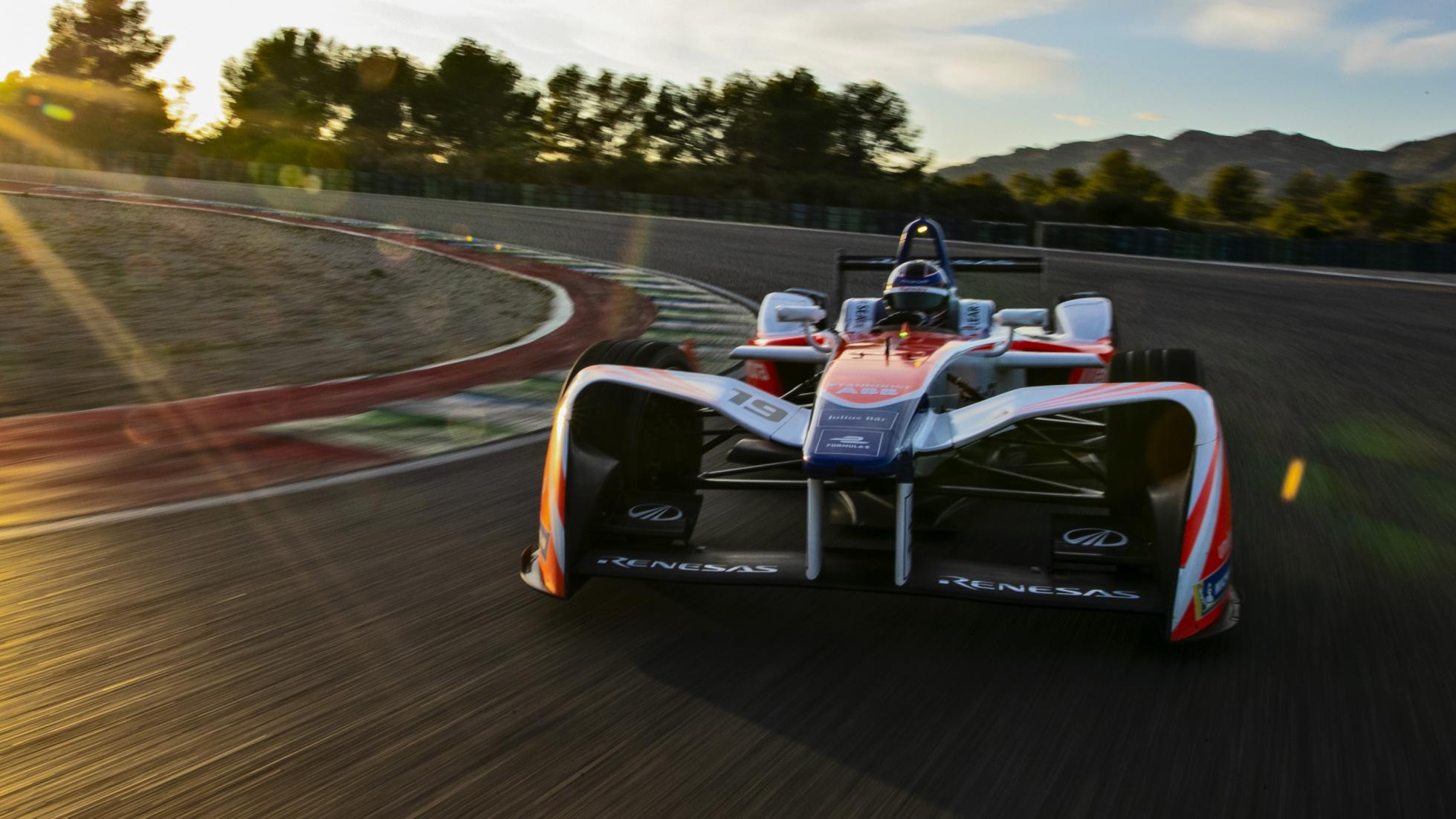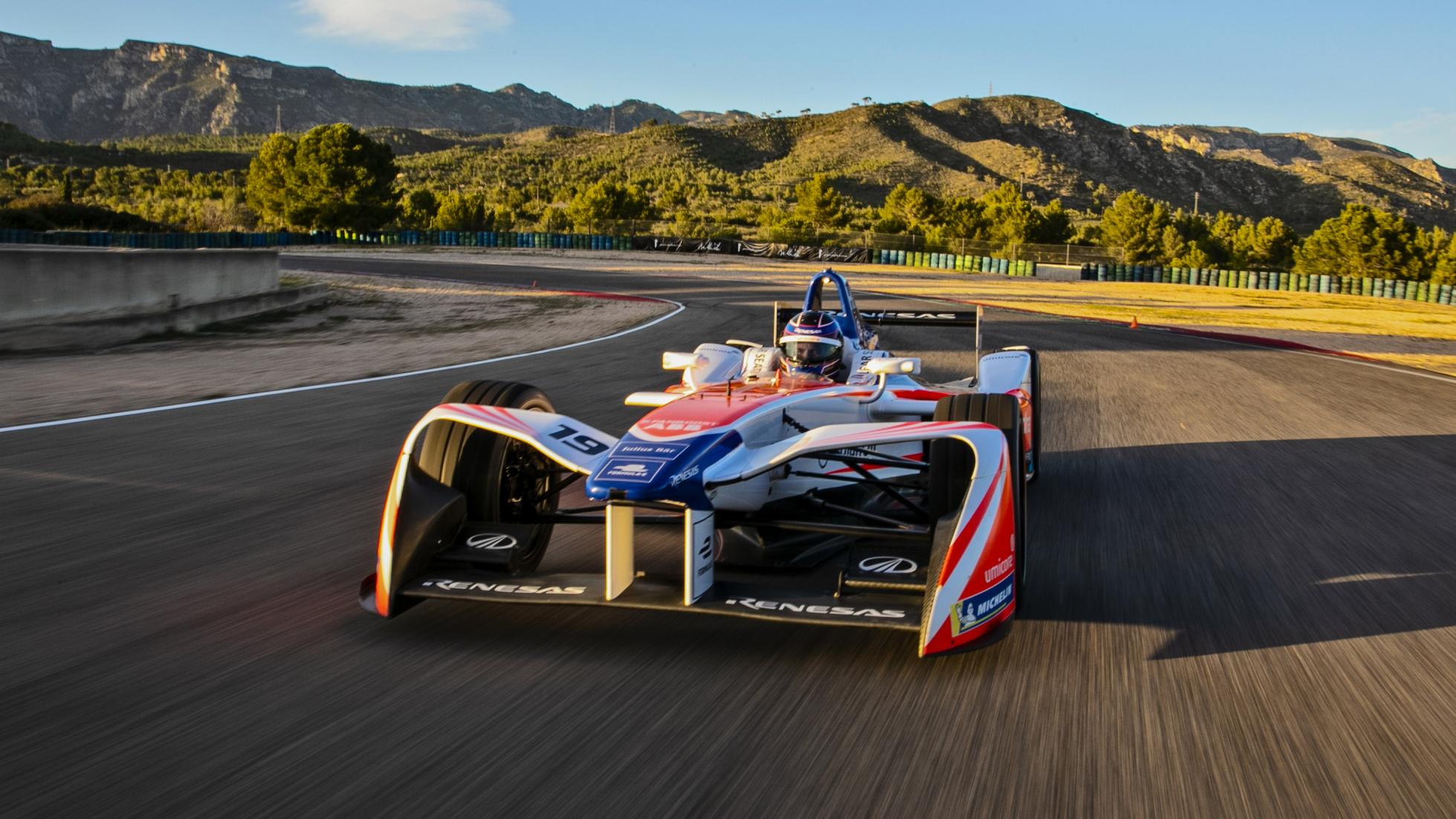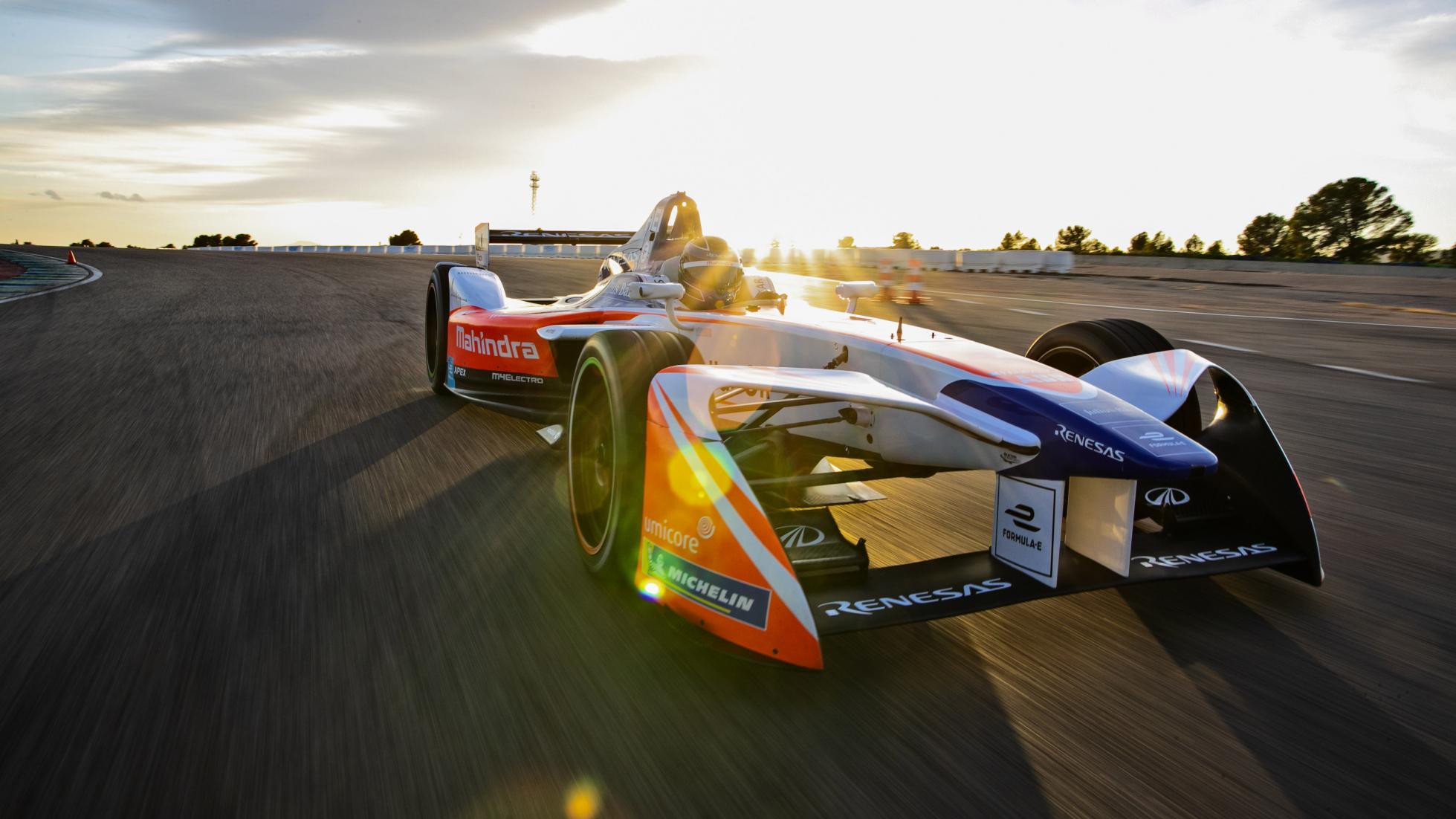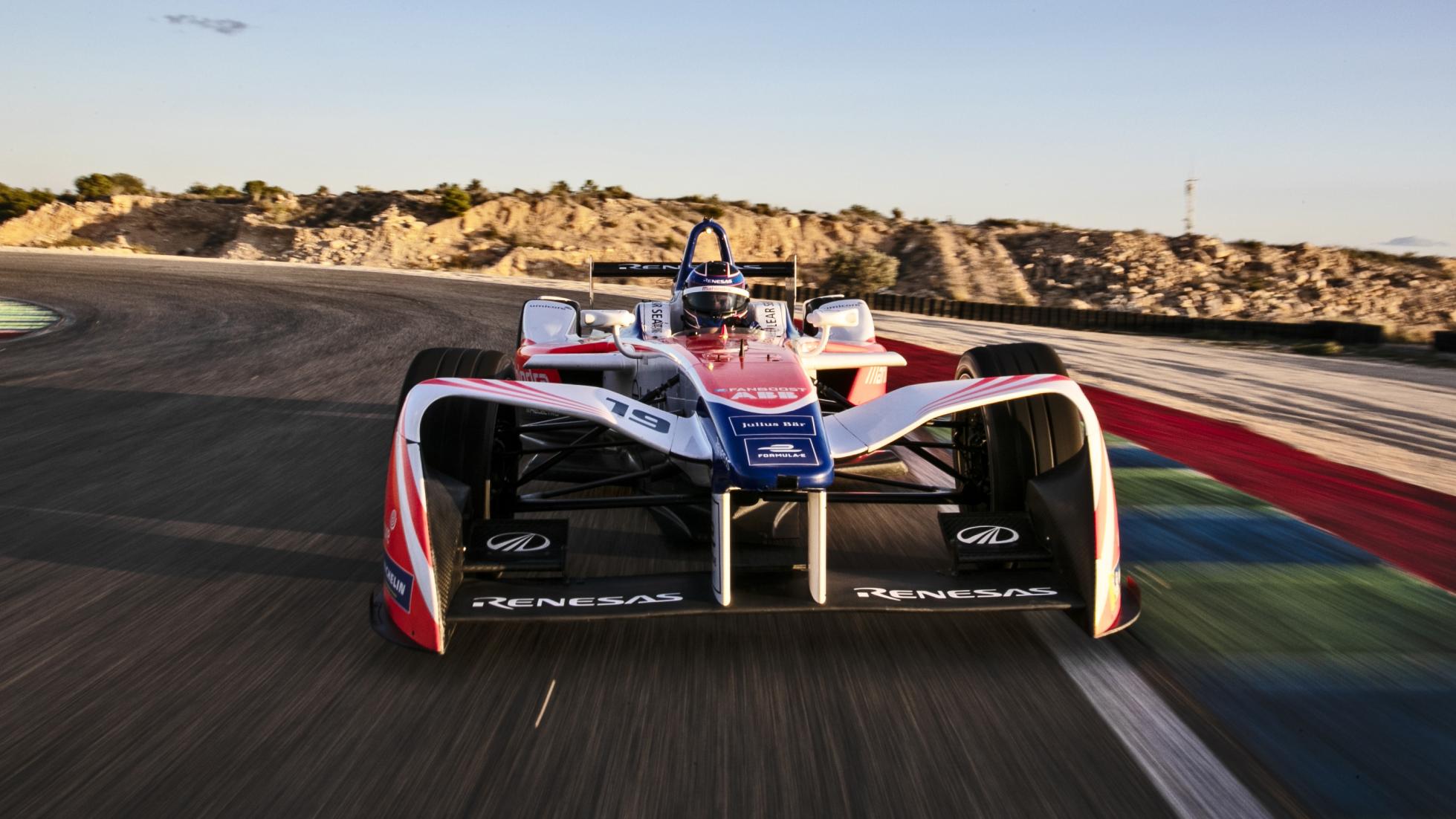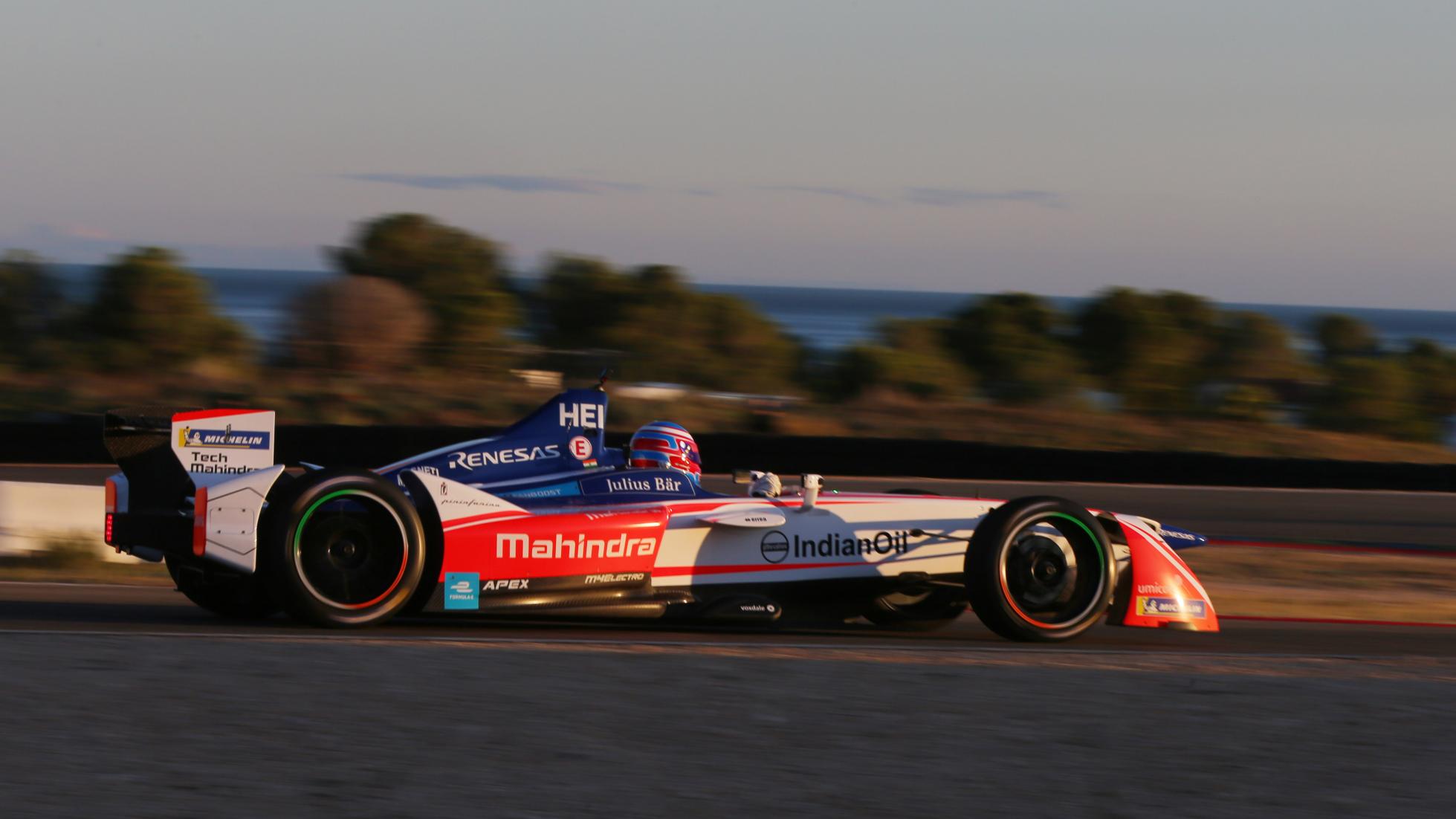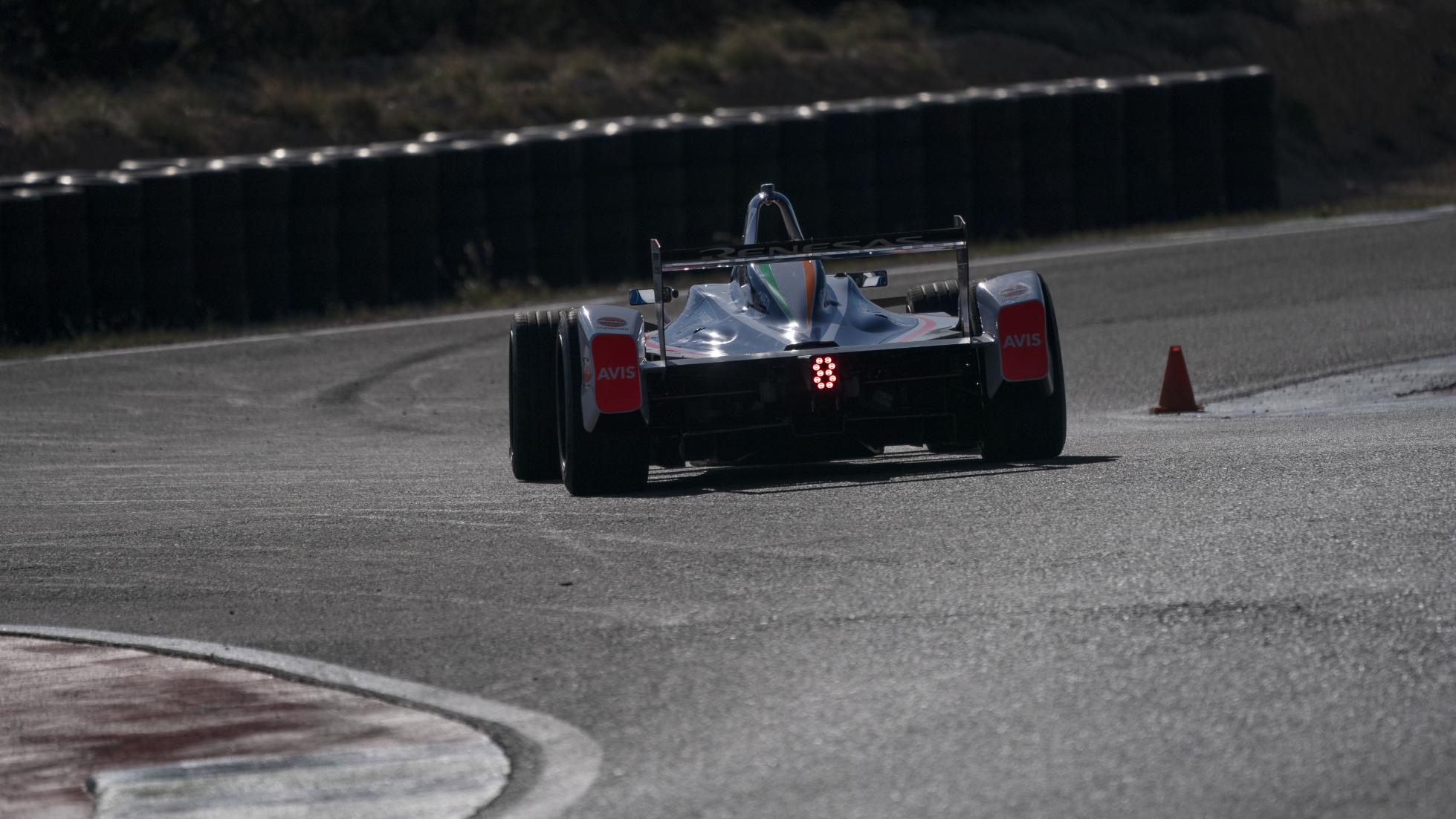Mahindra Racing Formula E review: Gen1 electric racer driven
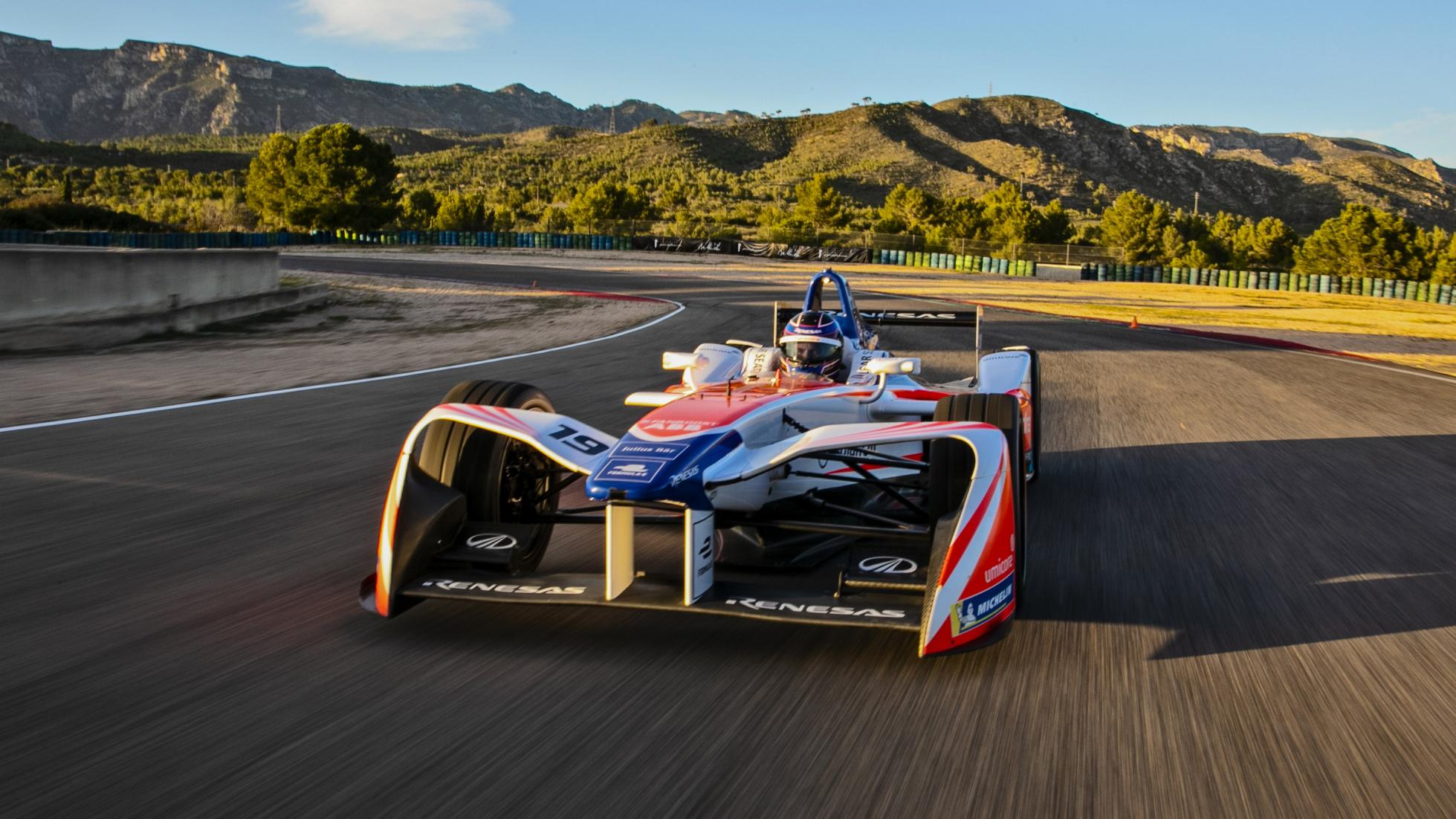
This is a bit different to the norm. What have we here?
Well, on the weekend that Formula E enters its sixth season with a double-header in Diriyah, we thought it’d be worth taking a look back at just how far the sport has come.
This then, is the Gen1 Formula E car – or more specifically, Mahindra Racing’s Gen1 Formula E car – and we’re here at the Calafat Circuit in Catalonia to give it a run out. Lucky us.
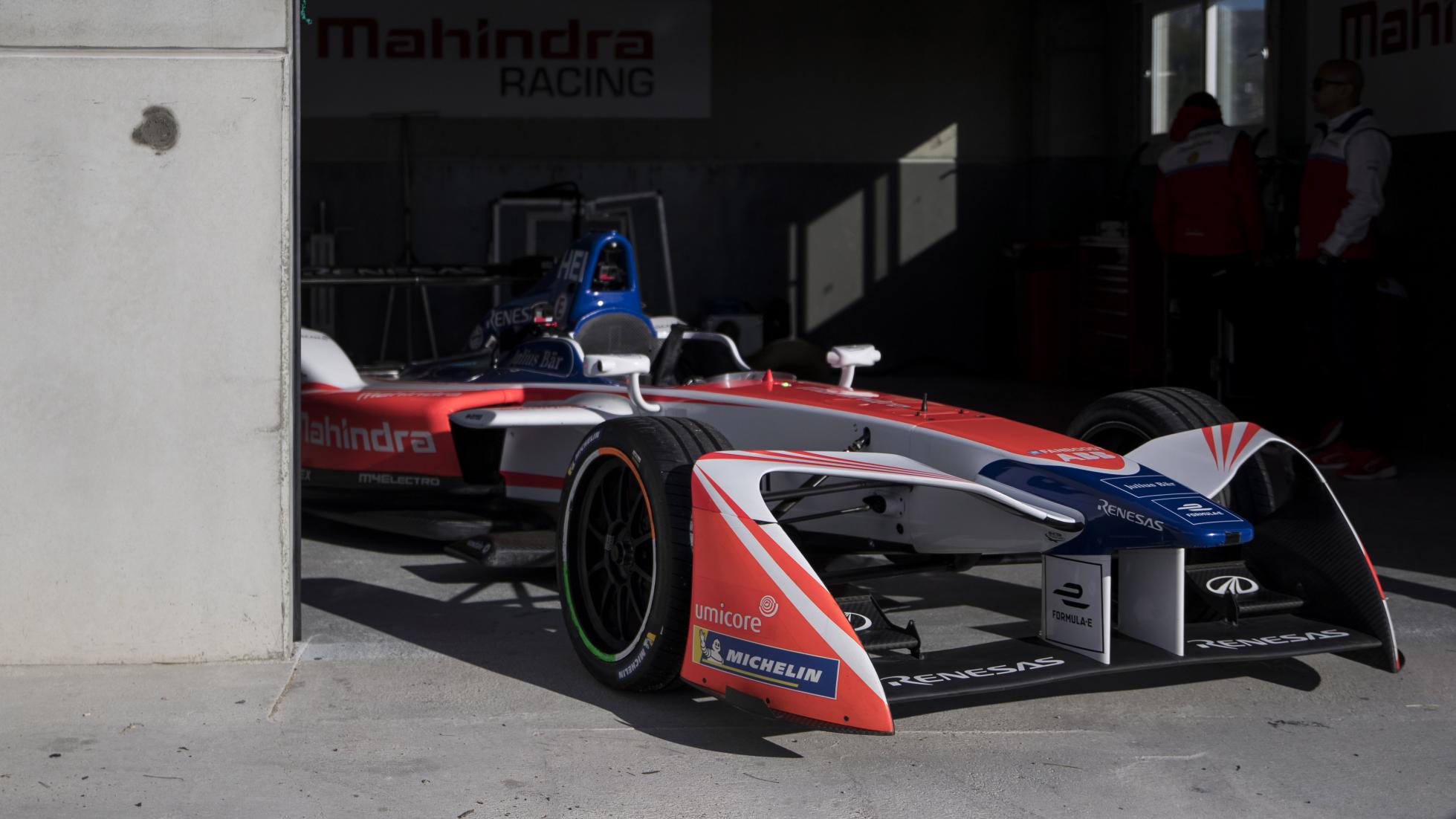
Recap please
Gen1 cars were used for the first four seasons of the all-electric race series as Alejandro Agag’s vision became reality. The chassis and monocoque, built by Dallara, were made from a carbon fibre/aluminium honeycomb composite and were supplied as standard to all ten teams. Changes to the bodywork and aero were strictly forbidden too.
Dallara wasn’t the only big name involved in the car’s development, though. Michelin developed bespoke all-weather tyres, Williams Advanced Engineering supplied the batteries and the motors came from McLaren Applied Technologies. Clang.
It’s a Formula car, so it must have huge power right?
Not exactly. That battery and motor combo produces a maximum of 268bhp in its all-out qualifying mode. To conserve energy though, drivers were limited to just 228bhp during a race, and today Mahindra has capped its cars at even less than that – so we’re only dealing with 161bhp through all four wheels.
You might remember that Gen1 cars could only manage around 25 minutes of running on a single charge, so races used to see drivers swapping into a spare car halfway through. Things are much improved in that respect with the Gen2.
Sounds quite tame. Hit us with some other facts…
Despite the 320kg of battery pack, the whole car only weighs around 900kg, so power-to-weight isn’t too disappointing. Torque vectoring wasn’t allowed either, and the same went for traction control to keep things as simple as possible. This is all good news.
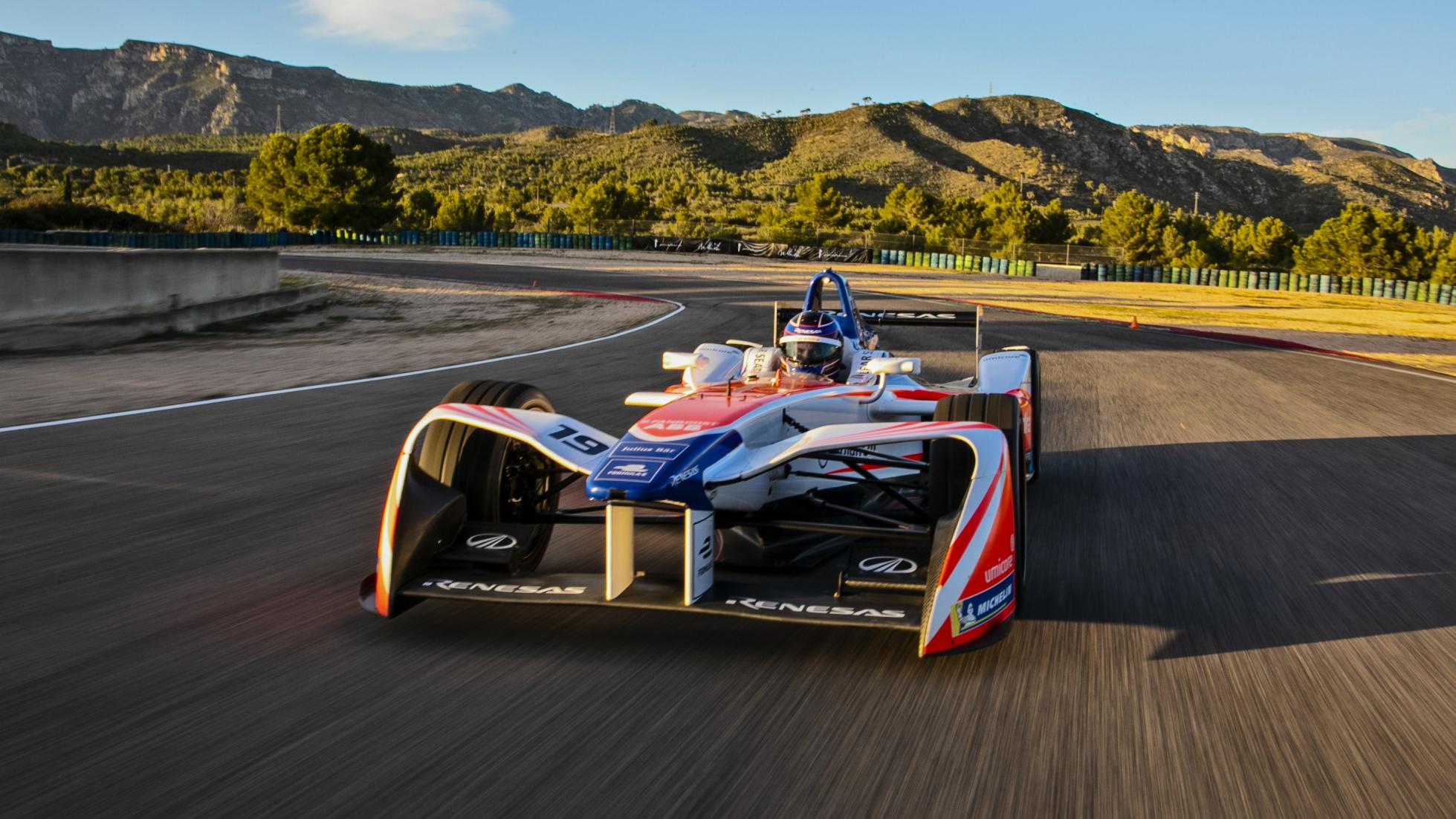
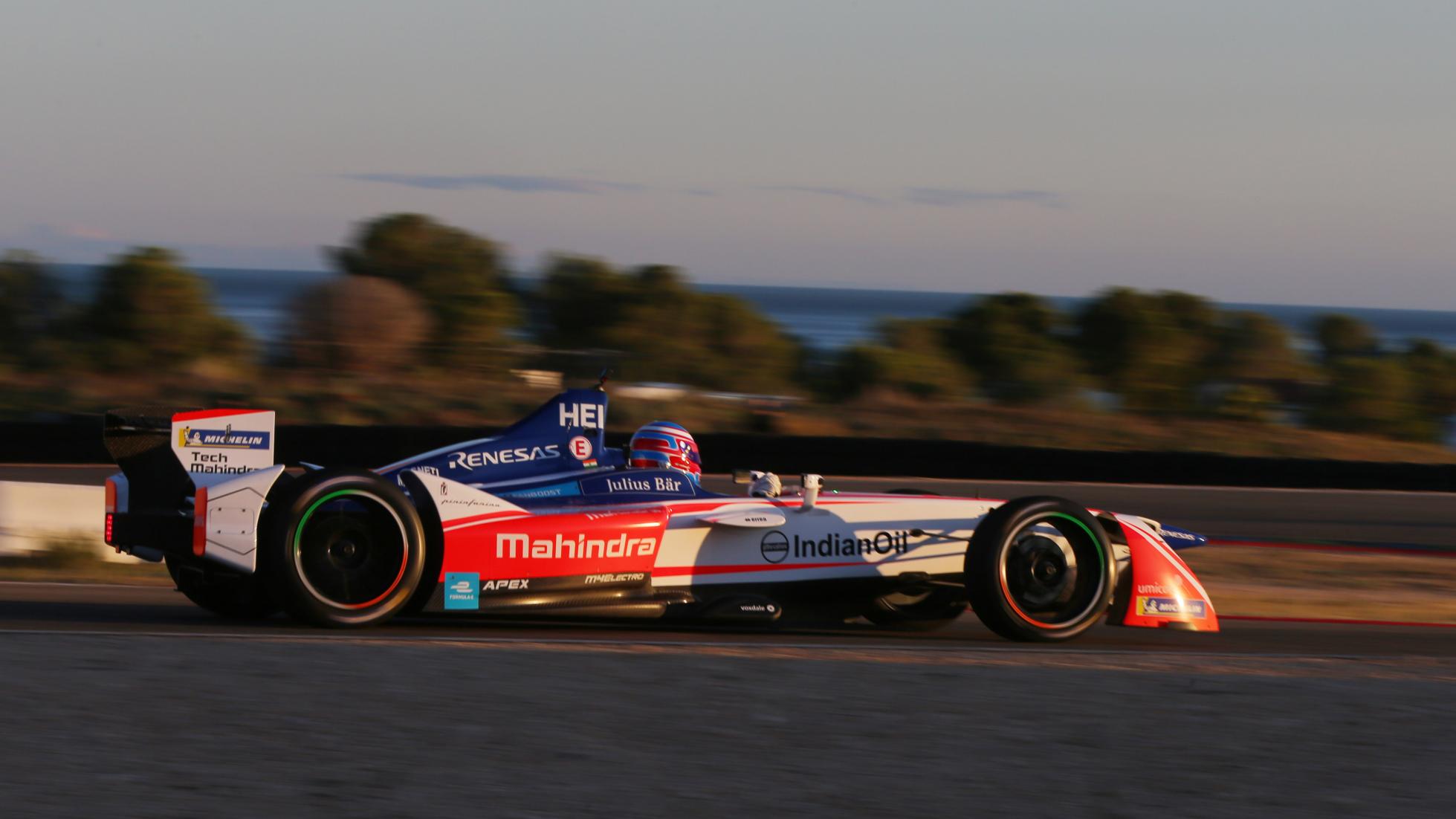
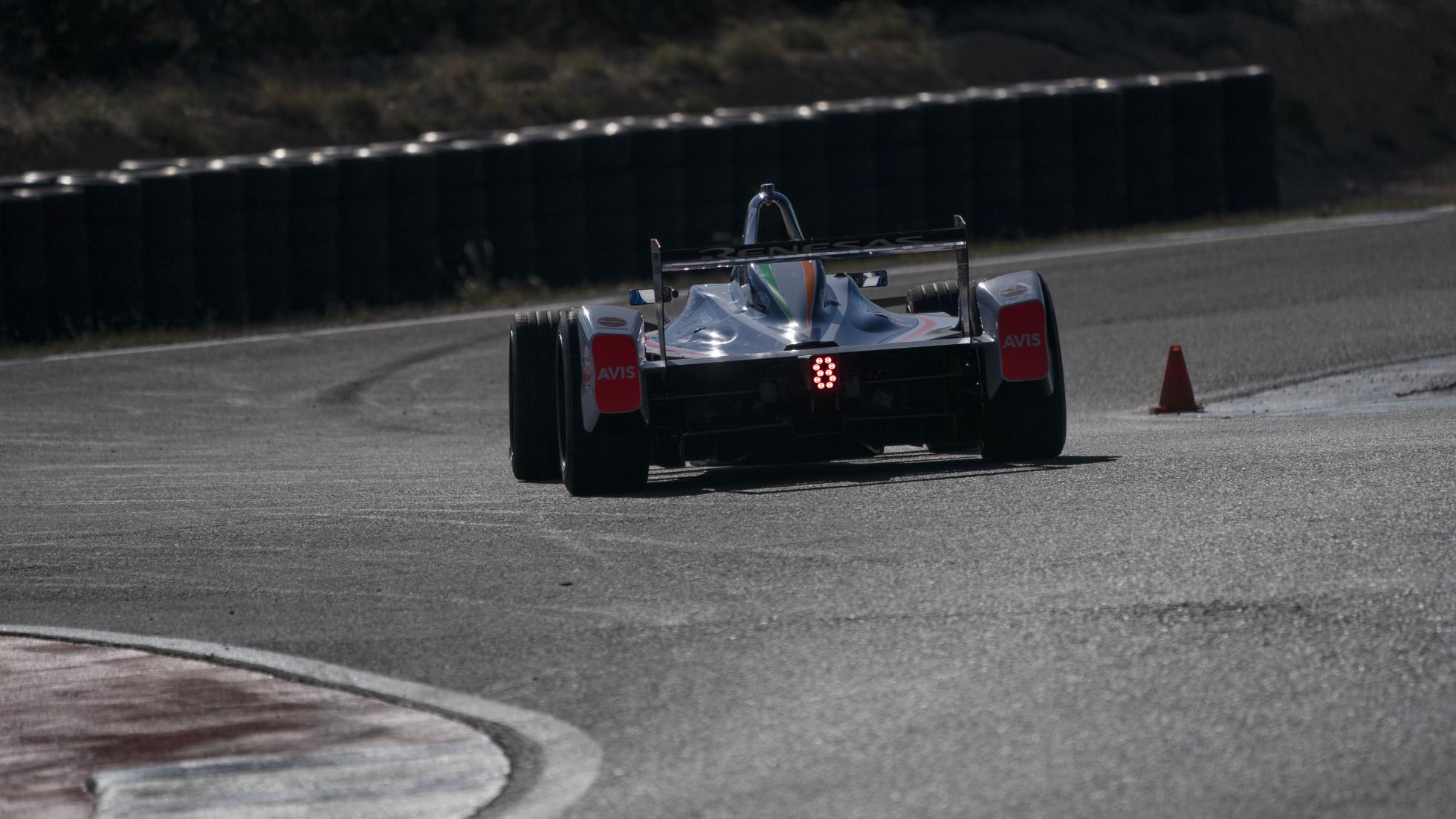
So, what’s it like to drive?
We bang on about this whenever we get into something lightweight and lacking in driver aids, but the Gen1 is actually a joy. With the wick turned down, the acceleration isn’t as mind-bending or face-melting as you’d experience in something like a Tesla Model 3 Performance – power delivery is far more progressive than that – so you have the confidence to push your own limits early on.
You’re never left wanting for a higher top speed either. Calafat is an extremely tight and complex circuit where both Mahindra and Jaguar’s Formula E teams test – they’ve added in extra chicanes to make it better represent the street circuits that Formula E usually resides upon.
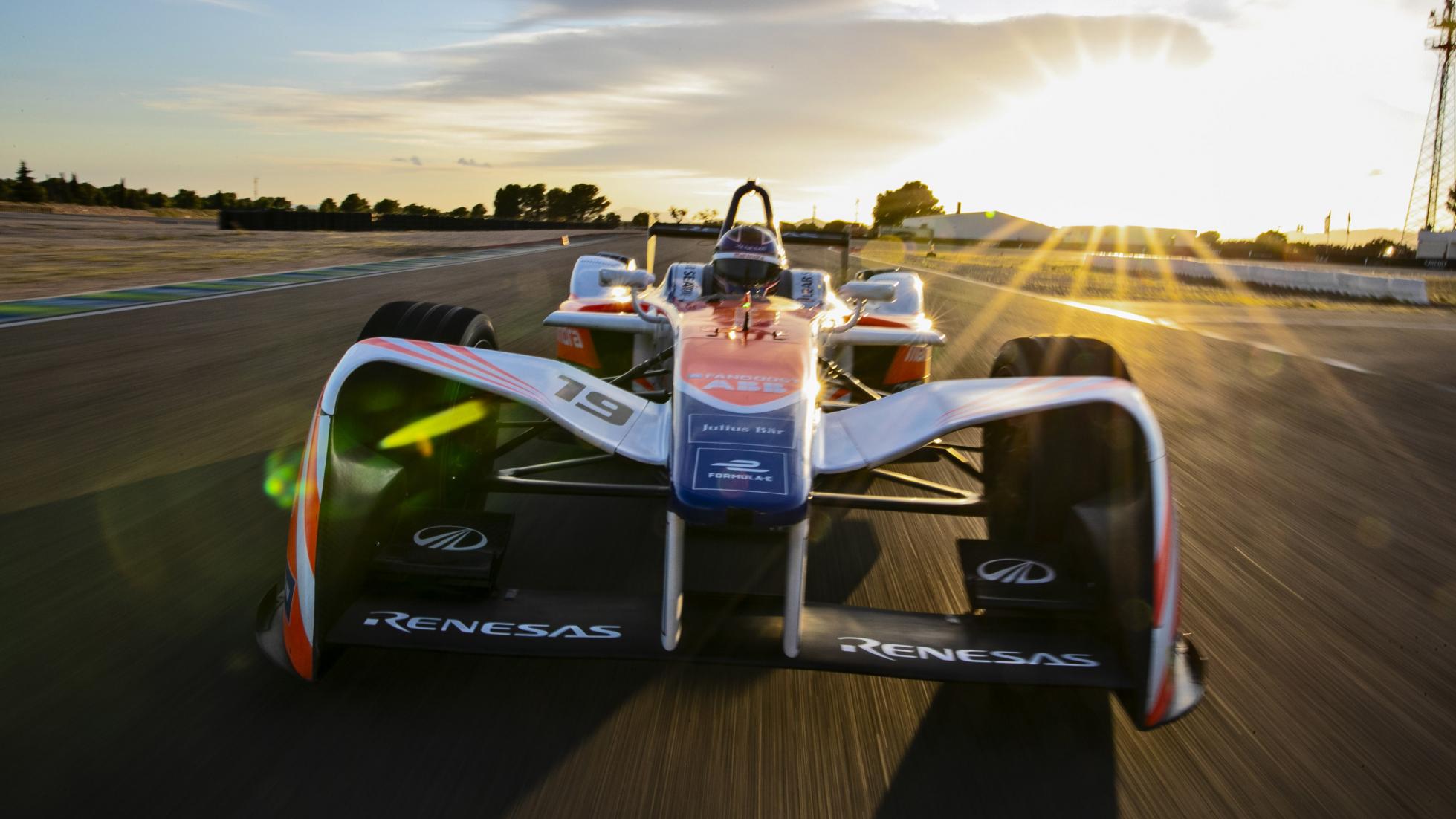
Turn-in is pin sharp even without power steering, especially once the tyres have warmed slightly, and the regen-equipped carbon-ceramic brakes are firm but full of feel thanks to the lack of ABS. Those specially developed Michelins are strong enough to deal with a few lock-ups too, so properly stamping on the left-hand pedal doesn’t bring too many issues.
The suspension is set up for street circuits and all of the potholes, manhole covers and surface changes that come with them. As a result, we’re given the green light to attack a few kerbs and see what’s what. Despite a bare carbon seat and a 75mm ride height, the Gen1 (and my backside) copes remarkably well.
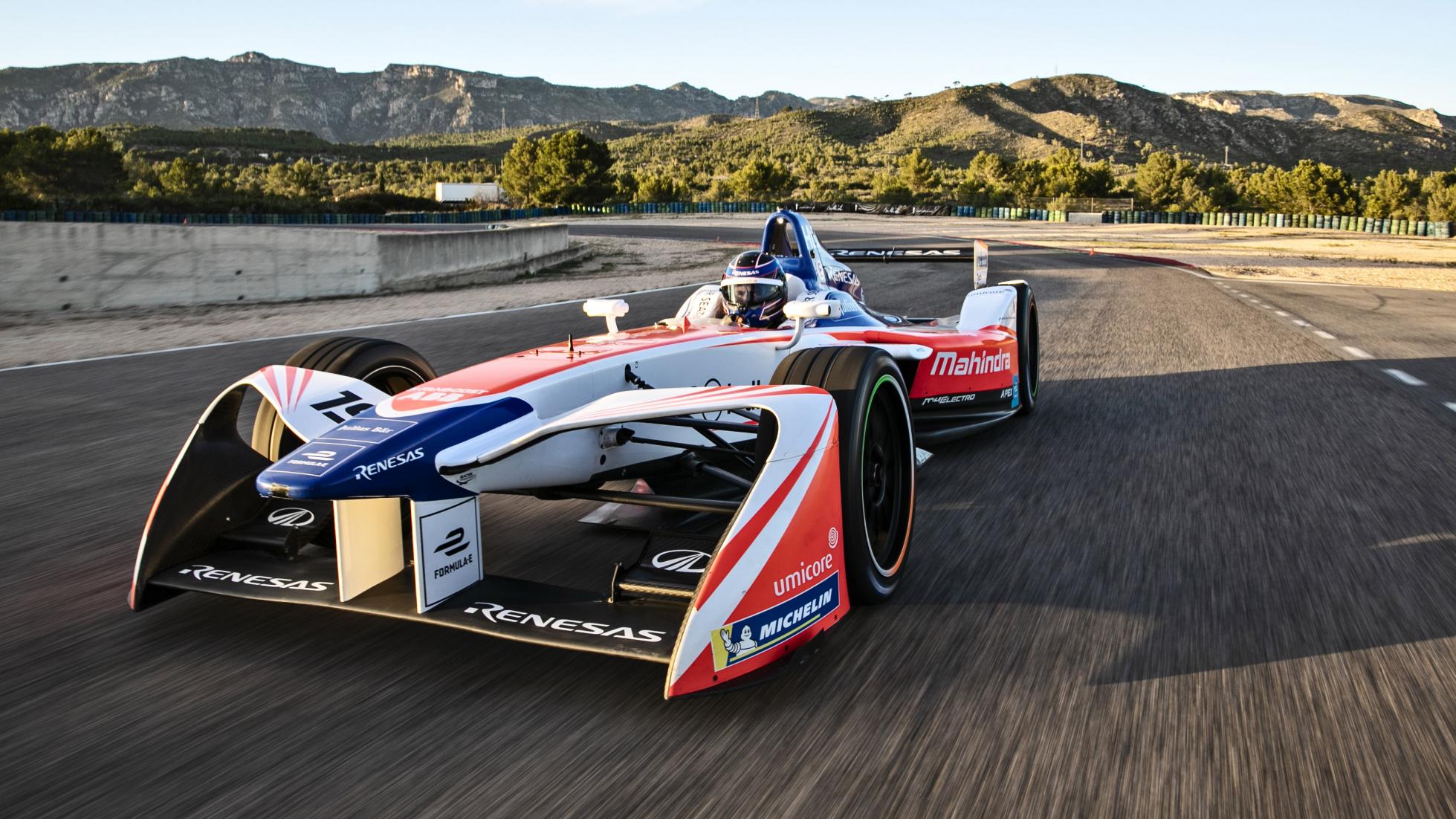
Does the lack of noise detract from the experience?
Nothing will beat the noise and emotion of an internal combustion engine, but the Gen1 sounds so different to anything that came before that it manages to be interesting at least.
The Alien-style whine of the powertrain can apparently reach 80 decibels, and being able to hear all of the component parts like brakes and tyres is a positive for one’s driving at least.
Final impressions?
Formula E may sound and seem like the future to its ever-growing fan base, but these Gen1 cars are actually all the better to drive for their simplicity.
What’s more, the new Gen2s may look even more revolutionary (and there’s no doubt the drivetrain has come on leaps and bounds) but much of the basics remain true to the original principles.
This drive did two things for us. We now understand why Formula E has been so popular with drivers, but we’re also confident that a properly lightweight EV sports car could be great fun on the road. Who’ll be first to take the plunge?



